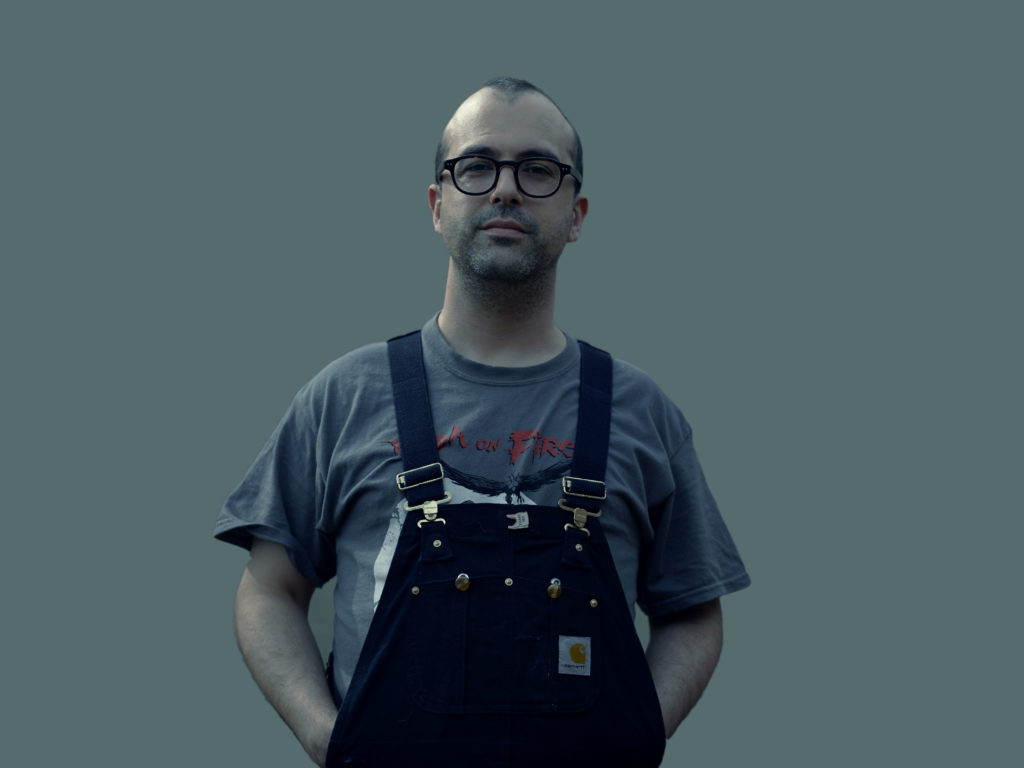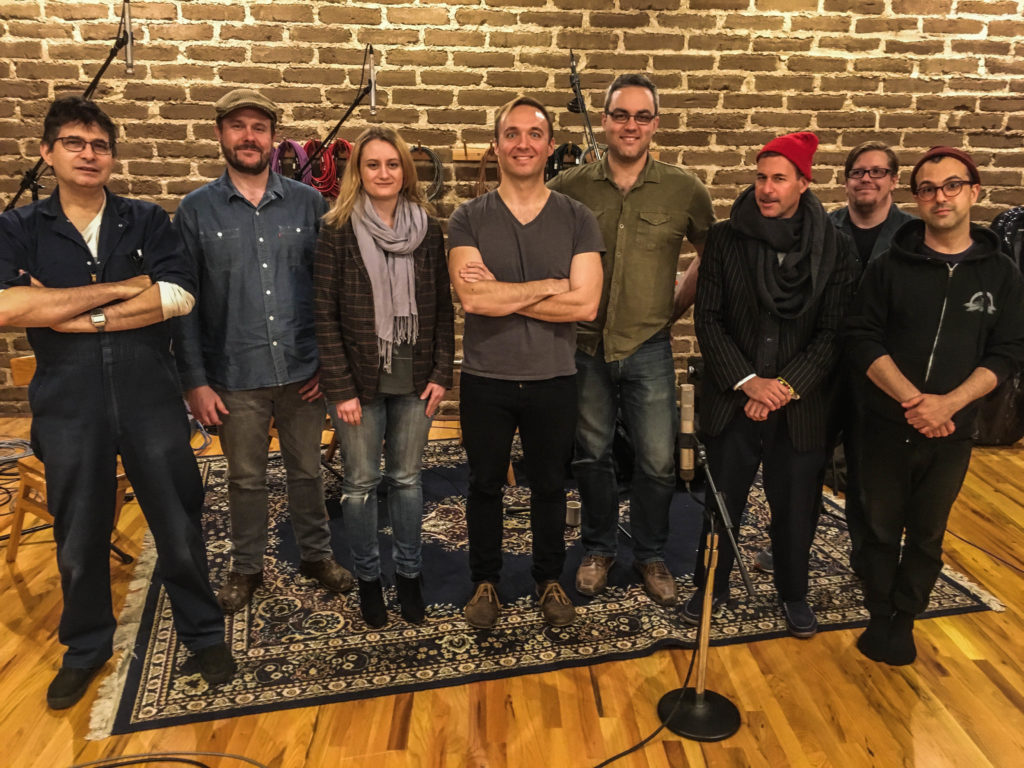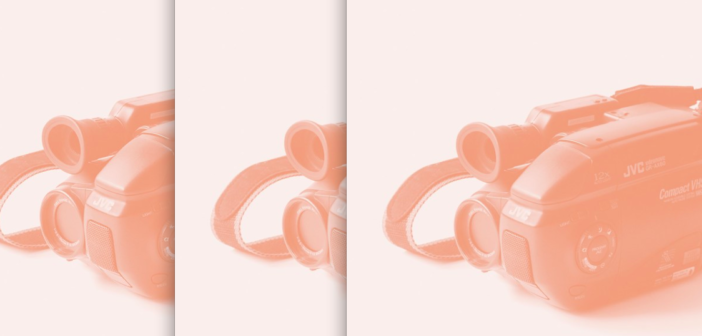Chris Cobilis’ recent record on Australia’s ROOM40 label is a metamusical headfuck, whilst also being reflexively very funny. This Is You is a collaboration with poet and founder of UbuWeb, Kenneth Goldsmith, and Chicago’s Spektral Quartet. The record “proposes a metaphysical feedback loop involving the lens, a broadcast system, biological ocularcentrism and the Sun,” reads the brief. “Using the birth of user-generated content as the starting point,” it goes on, “the work traces the 25-year history of the TV programme Funniest Home Videos in an attempt to describe the prism of existence as solar vanity” — and immediately the playfulness is clear.
What you get when you plug into its feedback loop is a depth of harmonic confusion, alongside Kenneth Goldsmith’s interweaved baritone assuring you that, yes, everything’s as unsettling as it seems. Courtesy of the recording mastery of one Steve Albini, the record carries itself organically across the abstract plain, with an astutely sardonic vigor. Sincerity isn’t lost, however, and at moments — spare as they may be — a definite beauty extends itself. All for the dischord to return.
This Is You is a record situated happily at the sonic periphery, but for those of you fortunate enough to stumble into its orbit, prepare to be thoroughly amused and discombobulated. To pick up a copy, make your way over to ROOM40’s website, and read on below to hear Chris and Kenneth’s thoughts on the product and its process.
Besides the TV show itself, what was the inspiration for this project and how did you guys come together to collaborate?
CC: Kenneth was dragged in sideways by my desire to have him voice the work. We met accidentally in Paris via the Qwartz Awards in 2009 and I’d hoped we might do something together one day. Seeing Kenneth read at the Palais de Tokyo in that same trip was my introduction to his poetry and a direct influence on the premise for this work. A few years later I was thinking about Funniest Home Videos and the idea of lifting material from it, for no reason other than I liked the show a lot when I was a kid. The concept and process came later, across the two years leading up to the recording. Kenneth’s unmistakable style to me seemed perfect to adapt the dominant compare/host – the central figure holding the show together. He speaks from all corners of his mouth and from breath deep down and up through his teeth and tongue. I didn’t have to direct him- I knew I wouldn’t have to, the result just sounds wonderful. Some of the pauses in the script were indicated by me, the prosody and (in my mind) melodic contour was all his doing, live. I absolutely love what he did and it cracks me up everytime I listen back.

Chris Cobilis.
On the same note, why Steve Albini? Obviously his reputation precedes him, but was there any specific reason? Likewise with Spektral Quartet?
CC: I could draw in greater narratives in and around information, thinking of the studio as a broadcast system and the engineer playing the role of a character or pivot in this conceptual work, but the truth is I’m from indie-rock and hence my first choice for a live recording is the person most famed for it. The experience was completely no-fuss and straightforward, as I had expected and the sound (with minute faults intact) was as I had hoped. There is also something perverse in recording a fruity New Music work in an environment also famed for its pragmatism, which is probably my sense of humor creeping in more than anything.
Spektral Quartet were introduced to me by Taylor Hales who works at Electrical Audio. I was looking for a group who could read each other in a live setting and also be familiar with 20th Century repertoire. It didn’t matter that they were a string quartet, it mattered more to me that they were open to interpreting an animated graphic score, but beyond that I was really impressed with their dedication to performing the work of emerging composers. Once they were confirmed I began to think of their palette as to how the information would be funnelled. They were so tolerant of me… once they realised that I was chill and content with ‘just whatever’ they were really able to relax and get into it. Very, very nice people and amazing musicians. I think their tape Chambers was my most listened-to album last year.
This is a conceptual work, but it’s also a form of ‘transcription’, whereby you have interpreted and appropriated the content of another group of objects. Practically speaking, what was the process of creating the the ‘animated graphic score’ and the ‘accompanying script’? How literal was the translation process, so to speak?
CC: So the process speaks of the concept and that process can merely be the space between with no end result. The space between could be considered as much the work as the work itself. Funnily enough the result considers space.
There were trials of different kinds in order for the information to move from one place to another. Some were very direct and others were gestural, and some became mangled along the way. I think the most direct and literal action was to play a funny video to the group with the instructions “play what you see.” The video was projected into the room before the musicians, who were invited to interpret in any way they saw fit — my only other condition being that they do it once and we record in that take.
Another example was to take a large section of audio from an episode of Funniest Home Videos, convert it to midi, import it into Ableton Live and then screen capture the moving midi blocks as they pass the playhead from left to right. The resulting video is a processed image of the original video’s audio and becomes a playable graphic score which still leaves considerable room for interpretation. My experience seeing and working with Decibel Ensemble in Perth was the catalyst for this approach; in recent years they have championed the animated score locally and abroad, and have presented numerous newly commissioned graphic works. I’ve been really lucky to see many concerts of theirs here in Perth.

Electric Audio studios.
“The space between could be considered as much the work as the work itself” — that makes a lot of sense. Incidentally, the use of space and silence, and the simple feature of speech, makes me very aware of the record as performance and a live recording. I imagine the silences almost as blackouts on stage or characters exiting. This is in keeping, I suppose, with the record being a transcription of the ‘performance’ of the TV show. And yet, these absences of sound contrast with the virtually endless stream of present images on the television screen. Where did the silences come from when you were composing and recording? Do they relate directly to something in the TV show, or are they your own imposition?
CC: Not in my imagination but as an artifact of moving the source material from one place to another, these emerging spaces (to me, at least) speak of interference in any system. I was imagining light waves from the sun, a transmission tower, video tape on a playback head, light entering the retina and so on. That these accidents become a place for reflection is exactly why I would introduce chance into a process — to let the process do the talking and to say things I can’t (or shouldn’t) say or think as a maker.
This conflict between ‘chance’ operations and being a ‘maker’ seems especially important. In the opening piece we hear Kenneth speak the line ‘they’re telling the story of the last time they told the story.’ As an aural rather than visual event, are we to imagine that music can stand outside this system of ‘solar vanity’, or does the record become just another ‘telling of the retelling’ of the story? How does the maker and/or storyteller avoid unwittingly reproducing the chain of narcissism, so to speak?
CC: I can’t stop the chain. I was thinking about narcissism and morality and how it seemed unfair to blame any human for enjoying its own reflection, especially if light was the common and all-pervading force. To give light the same agency would absolve us of our flaws and permit me to stand angrily in the street with my finger pointed to the sky and say: “it’s your fault.” The record (I hope) is a slice in time of the telling of the re-telling, or represents a parallel universe where light energy is refracted as sound waves.
The decision to make the record at all suggests to me that you believe music is capable of some form of social intervention or, at least, of suggesting the need for one. Is this something you think about?
CC: I would hope that any type of art could intervene (or not), but I think I’m more into saying and doing preposterous things with the stuff around me for the sake of it. Funniest Home Videos is a site that represents so much of what is around us culturally at the moment. Over a very short period we’ve flipped from being passive viewers to active makers of our own news and entertainment (if you want to draw a line between entertainer and audience) and I find it really weird that Funniest Home Videos wasn’t given the same cultural scrutiny that, say, mainstream TV was in the 60s and 70s — there’s a dropout in media philosophy’s appraisal of the 90s… Maybe Funniest Home Videos was just so fucking dumb that nobody touched it. I’m probably wrong, and I look forward to be proven so.
The successes of Funniest Home Videos could be read in many ways, but I’m interested in the part where we wanted to see ourselves on TV so much, as if it was the most important thing, that we would go so far as to construct staged video blunders for no other reason (well, maybe to win a prize). So, if we step back and think about the technology that drives it, the companies driving the technology, the market that drove producer Vin De Bona to devise cheaper (resource efficient) TV and where we are now (with a whole shitload of reality TV in between) we see a pattern of information based on something aggressively opportunistic outside of our control.
I’m left with the thought that the sun was merely trying to get a clearer look at itself through us, by pushing itself through these systems, and that life exists as a thin, reflected layer on the surface of the earth as a performance for the sun who is bored.
Productive boredom is a really nice idea; it sits pretty interestingly next to a counterpart in ‘unproductive entertainment’. Experimental music like this entails different risks to those posed by the vanity of TV show, such as not being widely accessed. Even if the kind of music you produce doesn’t typically enter into the market that hosts the viewers of Funniest Home Videos, do you still hope it might reach them, and enter into their ‘feedback loop’? Do you imagine your listener at any stage in the process?
CC: I guess if you’re my age you grew up with Funniest Home Videos. Experimental music and Funny Videos don’t have to be mutually exclusive. I don’t know who the listener is but I will learn this over time. I have imagined 16 year old me having fun with it. Kenneth said he liked it. If it is re-absorbed into the stream I will be very pleased, however I feel the reality is that it will sit on the outermost edge of the periphery or maybe in boxes in my garage. I played in bands for 20 years and it got me a few free beers. My concurrent forays into other music took me much further.

Chris, the Spektral Quartet and Kenneth (in the red hat) at Steve Albini’s (left) Electric Audio studios.
Kenneth, though this has already been kind of answered by Chris, what method or logic governed your intonation, inflection and pace when reading?
KG: Chris just handed the score to me without any instructions other than to simply read it in a non-dramatic way. I just read the work as I read my own.
Recently Bob Dylan won the Nobel Prize. A lot of people probably regard this as a good thing, as it accredits a popular form with the legitimacy of high art. Others likely even disagree as to its categorisation as literature in the first place. Do you consider your role in the project to be one of facilitating poetry or lyrics, or neither? At what point do you think it’s helpful to make this distinction, and when does it become abstruse and circular?
KG: We are working with found text, something very different than what Dylan does so it’s hard to compare the two. I think both exist concurrently and each has its own rules and structures by which one must abide. Found words can be lyrical and poetical; they just need to be framed and treated as such.
Yeah, you talk about that in your book, Uncreative Writing, where you think through the question of making ‘original’ artworks in our saturated and recorded world of digital reproduction. Rather than adding to the world of texts, you propose that the task of the writer now is to ‘manage’ it. Though This Is You wouldn’t popularly be thought of as a ‘text’, it still abides by the logic you lay out — as a work of transcription, it is ‘uncreative’. However, in the process of translating the TV shows into music, and as the snatches of dialogue will now be ‘accessed’ as music, we might say that something ‘new’ or ‘original’ is produced. What do you think about this?
KG: The fallacy of uncreative writing is that most people think that it goes against creativity, whereas it proposes new ways of being creative. One of those modes is translation, taking one thing and as, Jasper Johns said, doing something with it. These words are material, able to take on whatever form they are poured into.
Form and medium are really the key issues, really. Though I’m skeptical about the usefulness of the category, it strikes me as potentially one of the unique outcomes of ‘multimedia’ forms that they map quite accurately to the experience of our digital age. We are almost more used to encountering images, sounds and written texts altogether than at intervals. Do you think multimedia collaborations might be able to envision a new form, one that might be capable of trying to ‘accommodate the mess’ of our contemporary moment, as Beckett — your logo — put it?
KG: I think that we’re enacting “multimedia” practices now unconsciously on a mass scale. Right now, for instance, I’m typing this email while converting FLAC files to MP3. In the lower left corner of my desktop is a high-resolution image of a painting by an artist that I’m writing a catalog essay about, and in another window, right below where I’m typing is an RSS feed which keeps updating itself as I write, not to mention the constant background checking of my email that I glimpse in my status bar. Everyone is now multitasking and multimedia all the time. Such is the inevitable condition of life now.
You’re right — as I edit this, I’m in the same boat. Well, finally, in ‘Longest Last Light’, Kenneth frankly admits that he ‘do[es]n’t care if we don’t play better venues, I just want better groupies.’ Where and when can we expect to see you guys perform? And what’s been going wrong with the groupies?!
CC: I’d like to stage a world premiere in the, uh, world at some point in time with both Kenneth and Spektral Quartet. It’ll be about the money — but no plans yet. I guess the reception of the album might have an influence (errhgggh who am I kidding?)
Maaaaan, you should see the episode that line came from… it was Australia’s Funniest Home Videos. Even recent episodes will transport you right back to Graham Kennedy, Hey Hey It’s Saturday, crude Channel 9 humour… as if it never went away.
Kenneth Goldsmith has recently also published a book entitled Wasting Time on the Internet, which you can purchase here.
You can find This Is You here.




